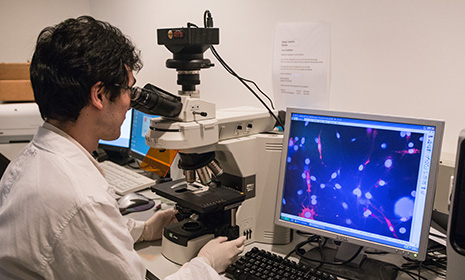HKU study provides first evidence that rise in tobacco tax curbs adolescent smoking
The School of Public Health of The University of Hong Kong Li Ka Shing Faculty of Medicine has been monitoring adolescent smoking in Hong Kong for years. According to the School?s territory-wide school-based study, researchers found that the 50% increase in tobacco tax in 2009 has resulted in a drop of 51% (from 6.9% in 2008 to 3.4% in 2010) in adolescent smoking in Hong Kong, which indicates the prevention of 13,452 adolescents from smoking and hence at least 6,726 future deaths due to tobacco-induced diseases. These results provide strong evidence to support a further increase in tobacco tax to save our children by preventing smoking and encouraging smoking cessation.
Methods
Five surveys have been conducted among secondary 1-5 students from 2003 to 2010. These were large-scale anonymous surveys conducted in up to 85 randomly selected schools and 53,504 students to represent Hong Kong secondary school students. The prevalence of current smoking (any smoking in the past 30 days) was monitored over time.
Research findings
With the 50% increase in tobacco tax in 2009, adolescent current smoking rate dropped from 6.9% in 2008 to 4.8% in early 2010 and 3.4% in late 2010, i.e. an overall 51% drop in adolescent smoking. As such, 13,452 adolescents are prevented from smoking.
The study also shows that the implementation of the comprehensive smokefree laws in 2007 helped reduce adolescent smoking. The current smoking rate was stable at 9.5% in 2006, but dropped sharply to 6.9% in 2008 after the implementation of the measures in 2007, i.e. 27% decrease in the smoking prevalence among adolescents in Hong Kong.
Dr. Daniel Ho Sai-yin, Assistant Professor, School of Public Health of The University of Hong Kong Li Ka Shing Faculty of Medicine and lead investigator of the study says, ?Smoking has disastrous impacts on adolescent health, such as reduction in lung function and increase in risks of respiratory illness and atherosclerosis, diminishing overall physical health. While in general, one out of two smokers will be killed by smoking, the risk of deaths for smokers who started smoking young can be much higher, meaning that two out of three such smokers will die from tobacco-induced diseases. Our research shows that the increase in tobacco tax is effective in reducing smoking rate among adolescents. Hence, I strongly believe that the proposed 40% rise in tobacco tax will further curb adolescent smoking.?
Professor Lam Tai-hing, Sir Robert Kotewall Professor in Public Health and Director of School of Public Health, The University of Hong Kong Li Ka Shing Faculty of Medicine says, ?Given tax increase is proven to have a major impact on reducing consumption and hence tobacco deaths, I call on legislators to support the Financial Secretary?s proposal of tax increase for the sake of public health. This powerful fiscal tool which can prevent thousands of young people from smoking and encourage many current smokers to quit thus saving thousands of lives rests in the hands of legislators. They must not act against public health and must support the World Health Organisation and Framework Convention on Tobacco Control?s recommendation on tax increase so as to protect public health, especially the present and future health of children.?
The Hong Kong Youth Quitline (2855 9557)
In 2005, the School of Nursing of The University of Hong Kong Li Ka Shing Faculty of Medicine collaborated with the School of Public Health and Department of Social Work & Social Administration to establish a peer-led smoking cessation hotline, targeting young smokers aged from 12 to 25. Trained university student volunteers provide tailored counseling to youth smokers over the phone. Follow up calls are made to check progress and offer encouragement to the youth smokers during the quitting process. Professor Sophia Chan Siu-chee, Director of School of Nursing of The University of Hong Kong Li Ka Shing Faculty of Medicine says, ?It is observed from the Youth Quitline that the rise in tobacco tax increases the motivation of smoking cessation among youth smokers. We also noticed that the quit rate is higher when the youth smokers stop smoking because of tax increase. We are pleased to announce that Hong Kong Government Tobacco Control Office has recently approved our proposal for new funding to support our Youth Quitline. Hence we shall train more student counselors and expand the coverage and delivery of such service.?
The tobacco control measures in 2007 and 2009
Since January 1, 2007, the amendments in the Smoking (Public Health) Ordinance (Smokefree laws) were implemented. Statutory no smoking areas have been extended to cover the indoor areas of all restaurant premises, indoor workplaces, public indoor places, and some public outdoor places. In 2009, the Financial Secretary increased tobacco tax by 50% (i.e. from $16 to $24 per pack).
About the Research Team
The territory-wide school-based study was led by Dr Daniel Ho Sai-yin and Professor Lam Tai-hing of the School of Public Health, The University of Hong Kong Li Ka Shing Faculty of Medicine. Other members of the research team include Dr Lo Wing-sze and Mr. Kelvin Wang Man-ping. The funding for surveys comes from University Research Committee, HKU; Health and Health Services Research Fund; Hong Kong Council on Smoking and Health; Department of Health; Food and Health Bureau.








.png)
